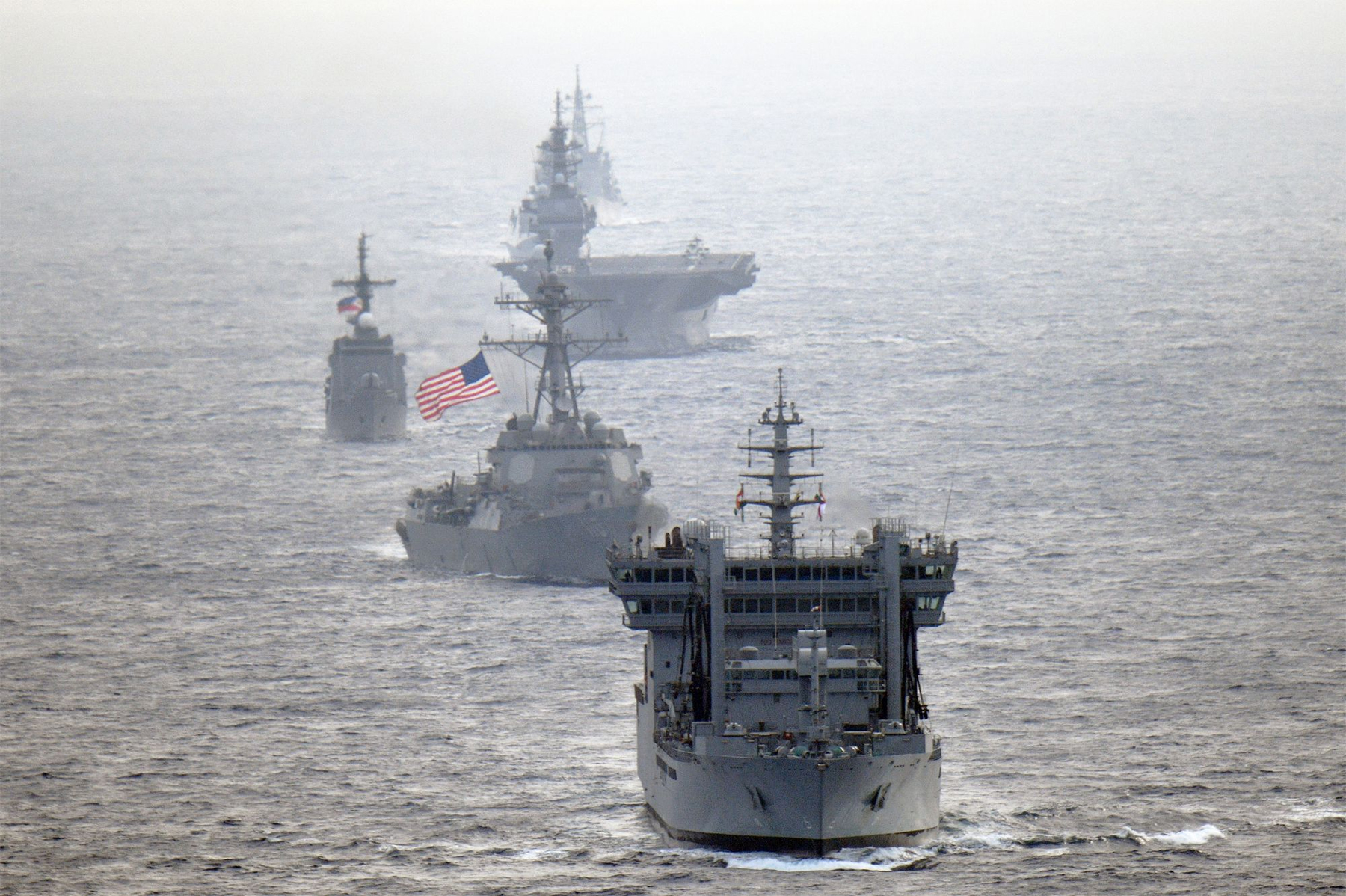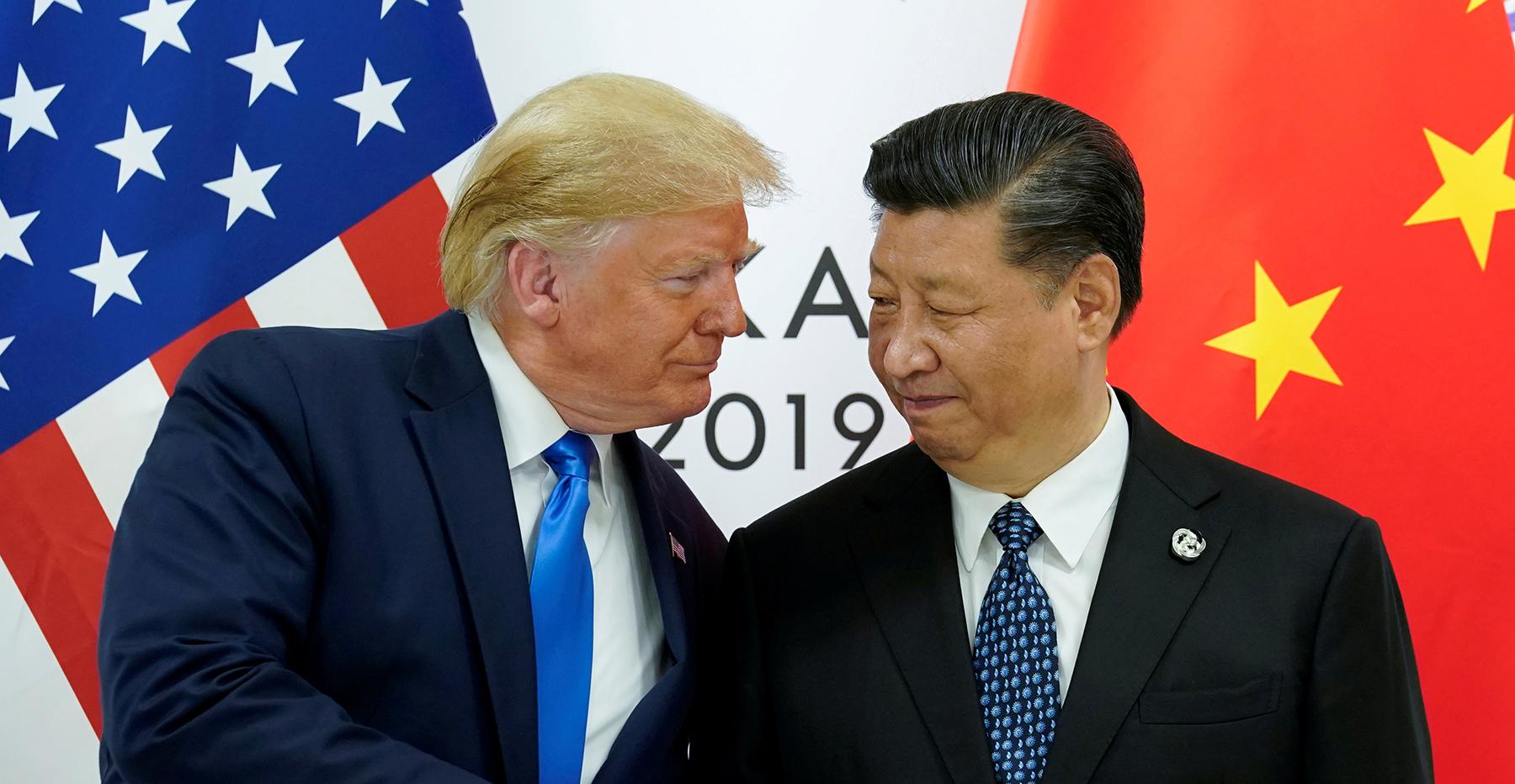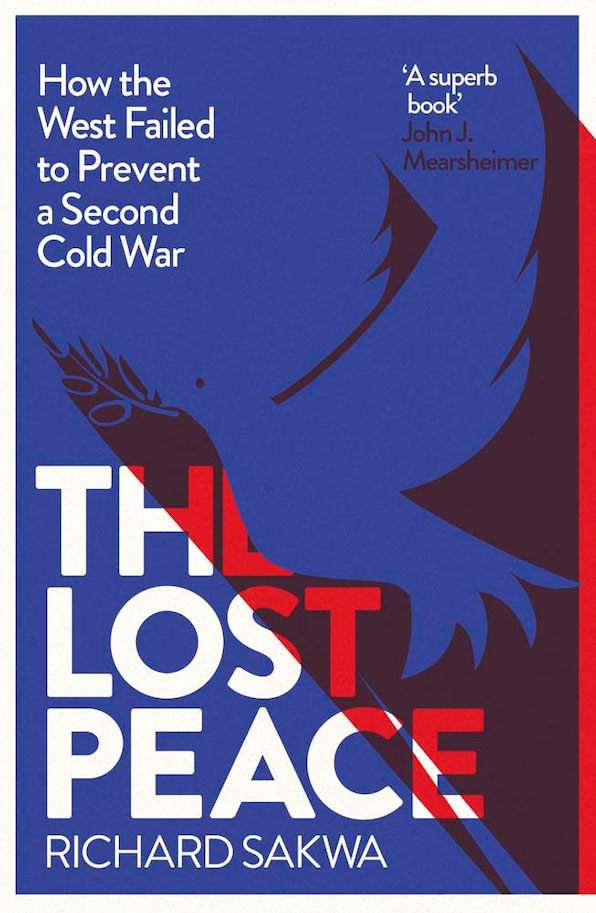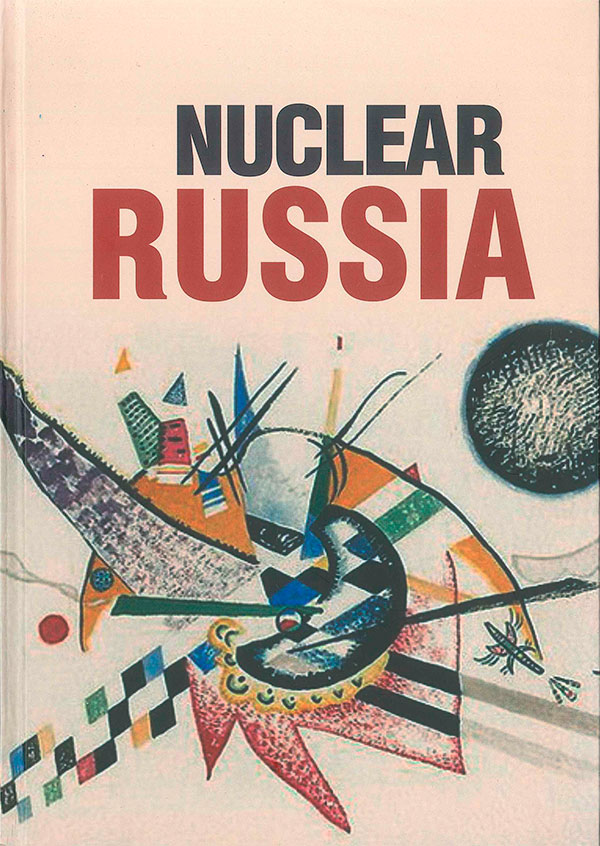Russia and China: Union or Strategic Uncertainty?
(votes: 6, rating: 5) |
(6 votes) |
PhD in Political Science, Director of the Centre for Comprehensive European and International Studies,HSE University, RIAC Member
Russia–China military cooperation is gaining momentum. Since the start of the year, the sides have conducted naval exercises, the first joint patrol of bomber aircraft and a series of joint military competitions. Theatre of war missile defense exercises in the form of computer simulation has also been announced. And the Chinese side will once again take part in the Tsentr strategic command post exercise this year.
A new agreement on military cooperation that will supersede the long-obsolete 1993 document is currently being drawn up. The agreement will turn many of the events that already take place, including the joint patrol of bomber aircraft, into formalized and ongoing areas of cooperation.
This cooperation is not limited to the Asia-Pacific. In 2017, joint fleet exercises were held on the Baltic Sea. And nothing is preventing Chinese and Russian bomber aircraft from conducting flights over the Atlantic.
The new military agreement may well include more sensitive elements, even helping China develop its own Ballistic Missile Early Warning System (BMEWS) and integrating Russian and Chinese BMEWS, with mutual automatic data exchange.
There are quite clear and long-term factors behind the accelerated rapprochement of two states in the military sphere. U.S.–China relations are rolling down to the same “destination” where U.S.–Russia relations have been since 2012–2014. Since the causes of the conflict between the United States and China go deeper than the US-Russia discord (Russia is in no position to challenge the United States as a global leader, no matter how much it might want to), there is no hope for a resolution in the near future.
Under these conditions, we cannot but pose an inevitable question about the nature of relations between Russia and China. In other words: Is a military and political union between the two countries possible? The sides have repeatedly denied any intention to create such a union.
Maintaining relations as a kind of “not fully formed union” has its benefits for both Russia and China. The partnership between the two countries is based on their attitude towards the United States and the world order it dominates. The issues with Russia’s attempts to integrate into this world order started to become apparent in 2007 (with Vladimir Putin’s Munich speech), and its failure became complete and obvious in 2014. For China, this moment came in June 2018, when the economic war with the United States began.
Outside the framework of the confrontation with the United States and the Western world order, the positions of Russia and China may differ on a number of issues. Russia pursues an independent policy of simultaneously developing relations with all the countries in Asia, including India, Japan and Vietnam, regardless of these countries’ relations with China. Beijing similarly pursues a policy of active development with European countries, regardless of their relations with Russia. One example of this is the 16+1 format, where China is developing relations with the countries of Central and Eastern Europe.
Russia–China military cooperation is gaining momentum. Since the start of the year, the sides have conducted naval exercises, the first joint patrol of bomber aircraft and a series of joint military competitions. Theatre of war missile defense exercises in the form of computer simulation has also been announced. And the Chinese side will once again take part in the Tsentr strategic command post exercise this year.
A new agreement on military cooperation that will supersede the long-obsolete 1993 document is currently being drawn up. The agreement will turn many of the events that already take place, including the joint patrol of bomber aircraft, into formalized and ongoing areas of cooperation.
This cooperation is not limited to the Asia-Pacific. In 2017, joint fleet exercises were held on the Baltic Sea. And nothing is preventing Chinese and Russian bomber aircraft from conducting flights over the Atlantic.
The new military agreement may well include more sensitive elements, even helping China develop its own Ballistic Missile Early Warning System (BMEWS) and integrating Russian and Chinese BMEWS, with mutual automatic data exchange.
There are quite clear and long-term factors behind the accelerated rapprochement of two states in the military sphere. U.S.–China relations are rolling down to the same “destination” where U.S.–Russia relations have been since 2012–2014. Since the causes of the conflict between the United States and China go deeper than the US-Russia discord (Russia is in no position to challenge the United States as a global leader, no matter how much it might want to), there is no hope for a resolution in the near future.
Under these conditions, we cannot but pose an inevitable question about the nature of relations between Russia and China. In other words: Is a military and political union between the two countries possible? The sides have repeatedly denied any intention to create such a union.
What is more, in their official rhetoric both China and Russia pointedly condemn the very idea of military and political alliances, which have long been referred to as “relics of the past.” By rejecting the idea of military and political alliances in principle, both Moscow and Beijing justify their opposition to the expansion of the U.S. system of unions in strategically important regions.
The parties have repeatedly confirmed that they have no intention of creating a military union. This was reiterated once again during the visit of President of the People’s Republic of China Xi Jinping to Moscow in June 2019. The Joint Statement on Developing Comprehensive Partnership and Strategic Interaction Entering a New Era states that the sides “refuse to establish allied relations, confrontation or non-directedness against third-countries.”
Thus, against the background of the continuing rapprochement of Russia and China, their leaders not only avoid talking about a union but also prefer to enshrine the lack of intention to build such relations in the foreseeable future in official documents.
What is this? How does it accord with the steps that Russia and China are taking in practice?
First of all, it makes sense to consider what an alliance between Russia and China could represent in the current conditions.
This problem is largely viewed through the lens of the experience of the world’s most powerful alliance, namely, NATO. NATO is perceived as an example of a military alliance with the most strictly prescribed conditions. The first part of Article 5 of the NATO Charter is often quoted in this respect: “The Parties agree that an armed attack against one or more of them in Europe or North America shall be considered an attack against them all…”
However, the mechanism for exercising the right to collective defense is extremely vague. Assistance to the attacked party or parties is to be provided “by taking forthwith, individually and in concert with the other Parties, such action as it deems necessary, including the use of armed force, to restore and maintain the security of the North Atlantic area.”
The terms of the 1955 Treaty of Friendship, Cooperation and Mutual Assistance (the Warsaw Pact) drawn up by the Warsaw Treaty Organization were worded in a similar spirit.
From a legal point of view, neither the NATO Charter nor the documents that made up the Warsaw Pact contain any firm guarantees that the respective alliance will use force in response to an attack against one of its members. This notwithstanding, both the USSR and the NATO member countries counted on this and it was a basic fact of the Cold War. It was through the understanding on both sides that even a limited confrontation on the periphery would be fraught with extreme danger that stability was maintained.

South China Sea: the Second Front of the US-China Confrontation
Such assuredness could not come from language of the agreements and was based only partly on these documents. The real political and military steps taken by the parties to the agreements were far more important, as they indicated their intentions to fulfill their obligations under the coalition agreements as closely as possible if one of the coalition partners were to come under attack. The agreement outlined the form of the partnership but did not imbue it with any real content.
There were, and still are, numerous “sleeping” military alliances around the world that contain mutual obligations but which have never been activated in practice. For instance, the 1961 Sino–North Korean Mutual Aid and Cooperation Friendship Treaty, which has very rigid obligations in terms of mutual military assistance, are still in effect. However, China regularly calls the military obligations of the treaty into question and does not take the document seriously at all (until recently, that is).
The United Kingdom and Portugal have enjoyed allied relations for centuries (the first such agreement was signed in the XIV century) that survived countless wars and were used in the interests of the United Kingdom during the XX century. However, in 1961, India forcefully annexed the Portuguese colonies of Goa, Daman, and Diu. At the time, the United Kingdom declared that entering into a war with India over this was “out of the question.”
Real actions prevail over the letter of contracts. Sweden is not a member of NATO, but, from the point of view of practical military planning, it should be treated as such. And it has been since the days of the Cold War. As proof of this, we can point to the nature of joint exercises and exchanges of military delegations; intelligence cooperation; military-technical policies; and Sweden’s participation in NATO missions abroad.
Russia and China already have a document in place that, in extremely vague terms, describes possible military cooperation in the event of a threat to the security of one of the parties.
We are talking about the 2001 Treaty of Good-Neighbourliness and Friendly Cooperation Between the People’s Republic of China and the Russian Federation. Article 9 of the treaty reads as follows:
“When a situation arises in which one of the contracting parties deems that peace is being threatened and undermined or its security interests are involved or when it is confronted with the threat of aggression, the contracting parties shall immediately hold contacts and consultations in order to eliminate such threats.”
Thus, even now, in the event of a military threat to one of the parties, Russia and China must, under the treaty, initiate contact with each other in order to discuss possible joint actions to eliminate the threat. The use of military force is not specifically mentioned, but it is not excluded either. In essence, such obligations do not look any weaker in principle that the norms of the NATO Charter — if we consider the two documents out of context, that is.
The context of the 2001 treaty was fundamentally different. At the time, Russia was in deep crisis as a military power, and it was unclear whether or not the country would be able to maintain any significant aspects of the military potential it had inherited from the Soviet Union. China was taking the first steps towards restoring its own military power. Both countries were relatively weak economically and pursued a policy of integration into the U.S.-led liberal world order. Military cooperation was in its infancy and was primarily intended as a means of insurance against any obvious military aggression on the part of the United States – a scenario that seemed almost impossible back then.
Even now, in the event of a military threat to one of the parties, Russia and China must, under the treaty, initiate contact with each other in order to discuss possible joint actions to eliminate the threat. The use of military force is not specifically mentioned, but it is not excluded either.
Given these circumstances, it stands to reason that the terms of the treaty should not be taken too seriously.
Fast forward to today, and the two countries have become stronger both economically and militarily. Both Russia and China are locked in a systemic conflict with the United States, one that penetrates all aspects of bilateral relations and is unlikely to be speedily resolved any time soon. Russia and China have been conducting joint military exercises for almost 15 years now, systematically increasing the interoperability of their troops.
These exercises gradually cover new areas of military activity. The general staffs and security councils of the two countries have established permanent contacts. Contacts at the highest levels between Russia and China are extremely close, and cooperation in all respects is generally consistent with what is to be expected between military allies.
In combination with the existing 2001 agreement, one can conclude that the union certainly has its place. The soon-to-be-concluded new agreement on military cooperation, as well as a number of other steps, will all contribute to the formation and consolidation of this union.
What would happen if the United States attacks China? For example, if the United States attacks Chinese forces that are attempting to resolve the issue reuniting Taiwan with the mainland? We cannot predict what would happen. A situation of strategic uncertainty arises, which at the planning stages of a possible U.S. operation against China would force the enemy (i.e. the United States) to prepare for a negative scenario (Russia’s entry into the war).
This raises the threshold of possible U.S. aggression significantly and requires additional forces and equipment to be allocated in order to carry out operations in the Pacific. This would lead to additional costs, which is a sensitive issue for a country living in debt with absolutely no prospects for easing that debt burden. At the same time, moving relations with China to a qualitatively new level in this manner would not require additional large expenses from Russia, as the country’s military planning is already based on the threat of a military conflict with the United States.

China and the US in Asia: Four Scenarios for the Future
Maintaining relations as a kind of “not fully formed union” has its benefits for both Russia and China. The partnership between the two countries is based on their attitude towards the United States and the world order it dominates. The issues with Russia’s attempts to integrate into this world order started to become apparent in 2007 (with Vladimir Putin’s Munich speech), and its failure became complete and obvious in 2014. For China, this moment came in June 2018, when the economic war with the United States began.
Outside the framework of the confrontation with the United States and the Western world order, the positions of Russia and China may differ on a number of issues. Russia pursues an independent policy of simultaneously developing relations with all the countries in Asia, including India, Japan and Vietnam, regardless of these countries’ relations with China. Beijing similarly pursues a policy of active development with European countries, regardless of their relations with Russia. One example of this is the 16+1 format, where China is developing relations with the countries of Central and Eastern Europe.
The sides value their independence, while Russia, as a smaller economy, avoids taking out large loans from China and giving the latter control over strategically important Russian assets wherever possible.
Does this mean that the two sides cannot act together? Of course not. Neither NATO nor the defunct Warsaw Pact are or were full-fledged alliances of great powers. They were hierarchically built groupings of superpowers and their vassals and half-vassals united only by a common ideology of varying degrees of rigidity.
Old alliances were, in fact, built around common goals (a common enemy) for a specific period of time. And they did not rule out the possibility that the members may have differing positions on secondary policy areas. Take the 1898 Fashoda Incident between Britain and France (who were allies in the First World War) during the Scramble for Africa, for example, which almost led to war. Immediately after the end of the First World War, Great Britain and France entered into a fierce political struggle over the redivision of the Middle East that culminated in the Sykes-Picot Agreement.
This is a typical model of relations between major powers, one that has always existed. The relations between NATO and the Warsaw Pact countries were a deviation from this, due to the ideological nature of the conflict between the two sides. Such minor contradictions do not rule out the possibility of an unremitting joint struggle in the name of a common goal. As such, a qualitative shift has taken place in Russia–China military and political relations in 2018–2019. The final format of these allied relations may be formalized in the future, or it may never happen at all. Either way, little will change.
(votes: 6, rating: 5) |
(6 votes) |





